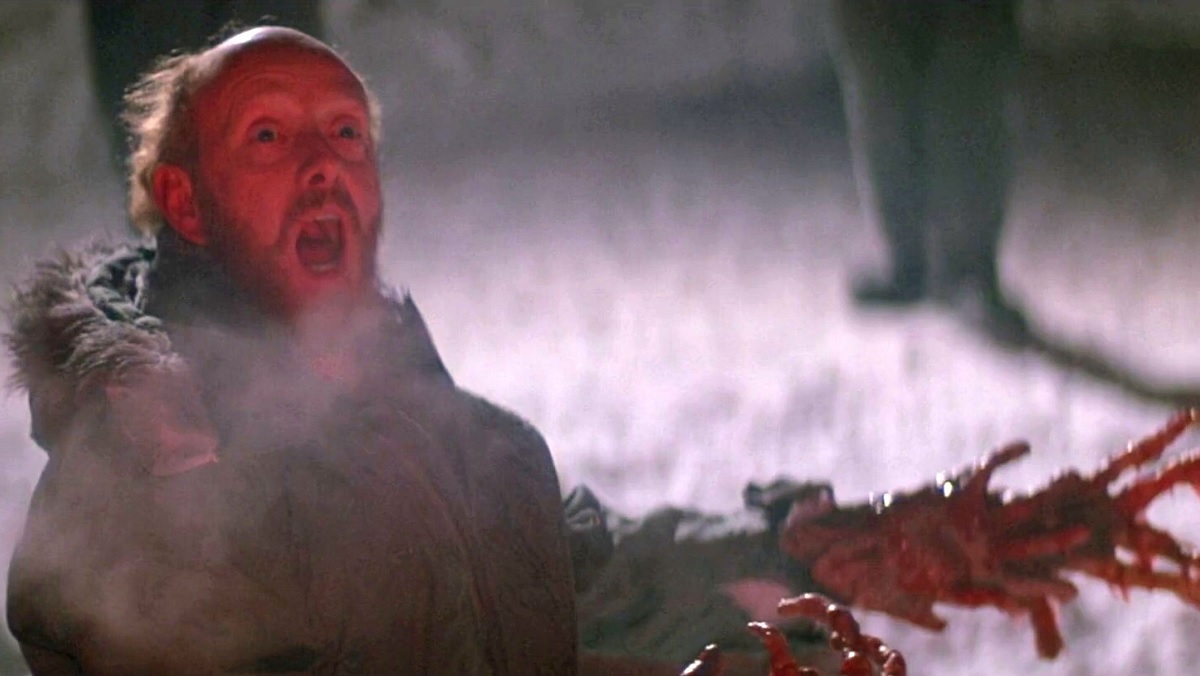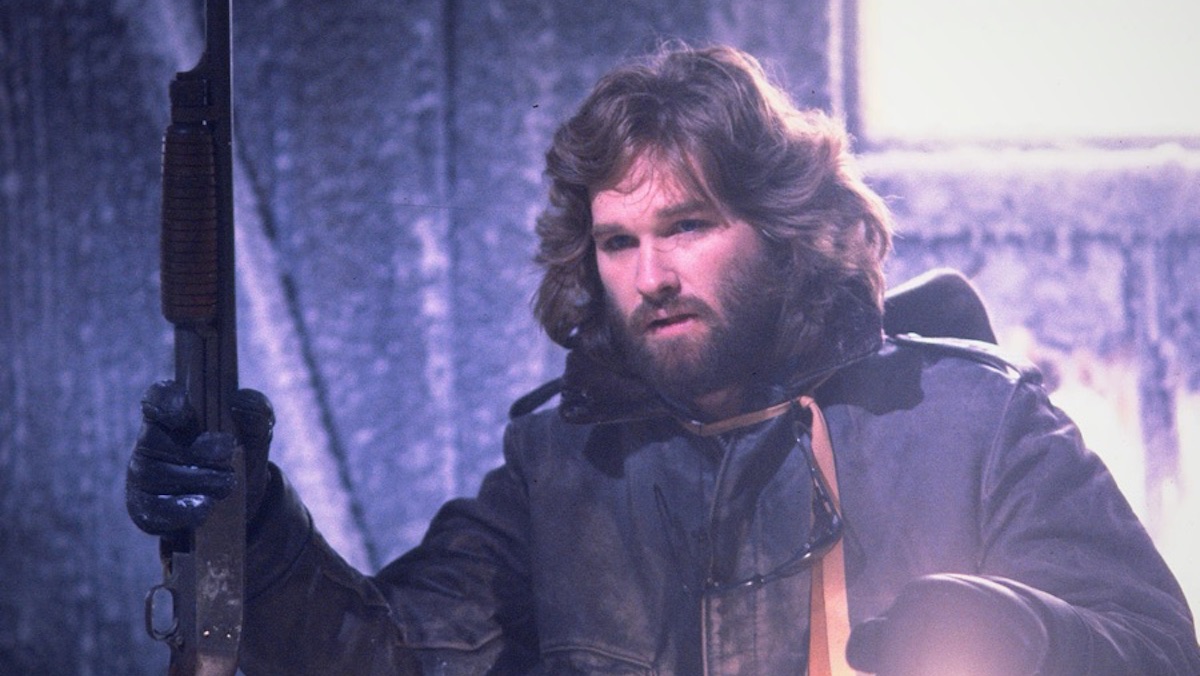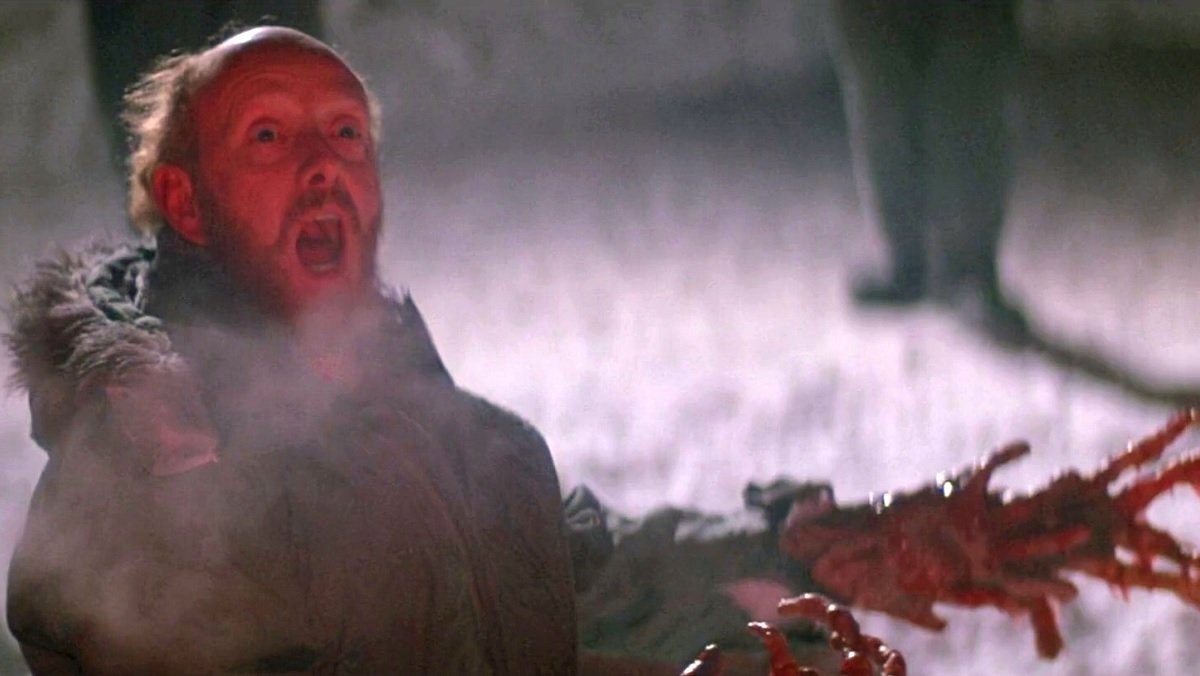Spooky season is here again, which means it is time for costumes, Halloween décor and, most importantly, horror movie marathons. But beyond pumpkins and jump scares, one question always comes up: Can I trust what I’m seeing? Few films tap into that fear like John Carpenter’s The Thing (1982), one of my all-time favorites.
Over 40 years later, it hits like it did decades ago because the real monster isn’t a creature. It is uncertainty. And in an age of AI, deepfakes, online conspiracies, and constantly shifting realities, The Thing might be more relevant now than when it first hit theaters in 1982. We’re so far gone, we now unfortunately have videos of Stephen Hawking in a WWE cage match that almost look real.
Set in the brutal isolation of an Antarctic research station, The Thing traps a group of men in a frozen purgatory where any one of them could be an alien imposter. There’s no prophecy, no clean origin story, no neat explanation waiting at the end. Trust splinters. Logic breaks down. Paranoia becomes the real villain. And that’s what makes it timeless, Carpenter understood that horror isn’t just about what lurks outside, but the terror of what we can’t confirm within.
Paranoia in the Snow vs. Paranoia Online
The whole fear and emotional investment in the film was that the creature took on the form of the men, almost to the very movement and posture. In a time before the internet, it was like Carpenter gave us a metaphor for misinformation before we even had the word in our vocabulary.
Then we fast-forward to 2025, and we’re all living in a kind of digital Antarctica, connected to everyone yet completely isolated. We scroll through endless feeds of faces, voices, smiles… and nearly 60% of us admit we don’t even trust they’re real anymore. Between 2019 and 2020, the number of deepfake online content increased by 900%, and it hasn’t slowed down since. A tweet, a clip, a profile any one of them could be The Thing, crafted by a machine, built to mimic someone down to their last blink. The paranoia that once lived in frozen outposts now lives in our phones.
Just to think that if The Thing were released today, some might dismiss it as an AI allegory, a story about impostors hiding in code. But that’s the genius: it already was.
Blood Tests and Deepfakes
One of the most intense scenes in The Thing is the blood test sequence, a desperate attempt to force truth into the open. Tied to chairs, each man becomes both suspect and hostage, waiting to see if the blood jumps. The silence and shallow breaths tell it all. With MacReady (played by Kurt Russell) in charge and trying to sort things out, nobody is sure of anyone.
Today, we run our own blood tests not with fire-heated wire, but with fact-checkers, reverse Google image searches, and “sources?” comments under viral videos or Wikipedia, which seems to get people in trouble. We’re still performing Carpenter’s experiment every day: Is this real? Prove it.

But unlike the Antarctic crew, we don’t have conclusive tests. With AI-generated voices that can replicate loved ones and deepfakes that can alter reality, we’re entering a cultural horror beyond jump scares. We jump to conclusions and illusions that can sometimes lead to costly mistakes.
In 2024, a survey revealed that 75% of Americans trust the internet less than ever before, with 78% stating it’s increasingly difficult to distinguish real from AI-generated content. Despite these concerns, human detection of deepfake images averages only 62% accuracy. This gap highlights the growing challenge of discerning authenticity in a digital world flooded with synthetic media.
The Prequel’s Tragic End: A Reminder We Never Learn
The 2011 prequel (written by Eric Heisserer), often unfairly dismissed, actually sheds light on the nature of the creature and its truly otherworldly origins. By showing the Norwegian camp’s downfall, it drives home a brutal truth: intellect and preparation don’t save you from paranoia. It’s wild because this crew had even more knowledge of how to identify the infected considering the Thing couldn’t replicate anything inorganic. You can analyze it, study it, even understand the threat, and still fall victim, because panic doesn’t play by the rules of logic.
Today, we know misinformation exists. We’ve seen it sway elections, fuel conspiracies, and fracture families. And yet it spreads. Like the Thing, mistrust doesn’t need a reason. It just needs a host.
What’s striking in both films is how quietly despair grows. Nobody screams about the end of the world. Nobody monologues about some greater evil. They just try to survive with what they think they know. Just like misinformation, they’re trying to catch it before it spreads, before it ignites like wildfire.

The Thing Is Us?
Unlike many horror villains, The Thing doesn’t have motives we can reason with. It doesn’t punish sin like Hellraiser. It doesn’t chase trauma like It Follows. It has no morality. It just is. That’s why it lingers in our psyche. It represents the terror of uncertainty, the idea that the enemy might look like your friend, sound like your father, or post like your favorite celebrity.
Carpenter leaves us with one of horror’s most haunting finales: MacReady and Childs, sitting in the cold, unsure if either is human. They share a bottle. They share suspicion. No resolution. No triumph. Just lingering dread.
“Why don’t we just wait here for a little while,” MacReady says, “see what happens.”
That’s us. Waiting. Scrolling. Watching. Hoping our world isn’t quietly replacing itself piece by piece while we’re trying to sleep.
Yes, The Thing Still Matters in 2025… And Beyond
If anything, The Thing is an anti-nostalgia film, brutally honest about the fragility of trust. In an age of curated feeds and algorithmic tribes, it reminds us how easily doubt can turn us against each other and mislead others. It warns us that panic often replaces logic. The horror isn’t that the alien is out there, it’s that we might not recognize each other anymore.
One thing is clear: we can only try to stay human, refusing to let ourselves be manipulated by AI, deepfakes, or the fears that divide us.
The post How THE THING Reflects Our Fears Now More Than Ever appeared first on Nerdist.
This articles is written by : Nermeen Nabil Khear Abdelmalak
All rights reserved to : USAGOLDMIES . www.usagoldmines.com
You can Enjoy surfing our website categories and read more content in many fields you may like .
Why USAGoldMines ?
USAGoldMines is a comprehensive website offering the latest in financial, crypto, and technical news. With specialized sections for each category, it provides readers with up-to-date market insights, investment trends, and technological advancements, making it a valuable resource for investors and enthusiasts in the fast-paced financial world.
